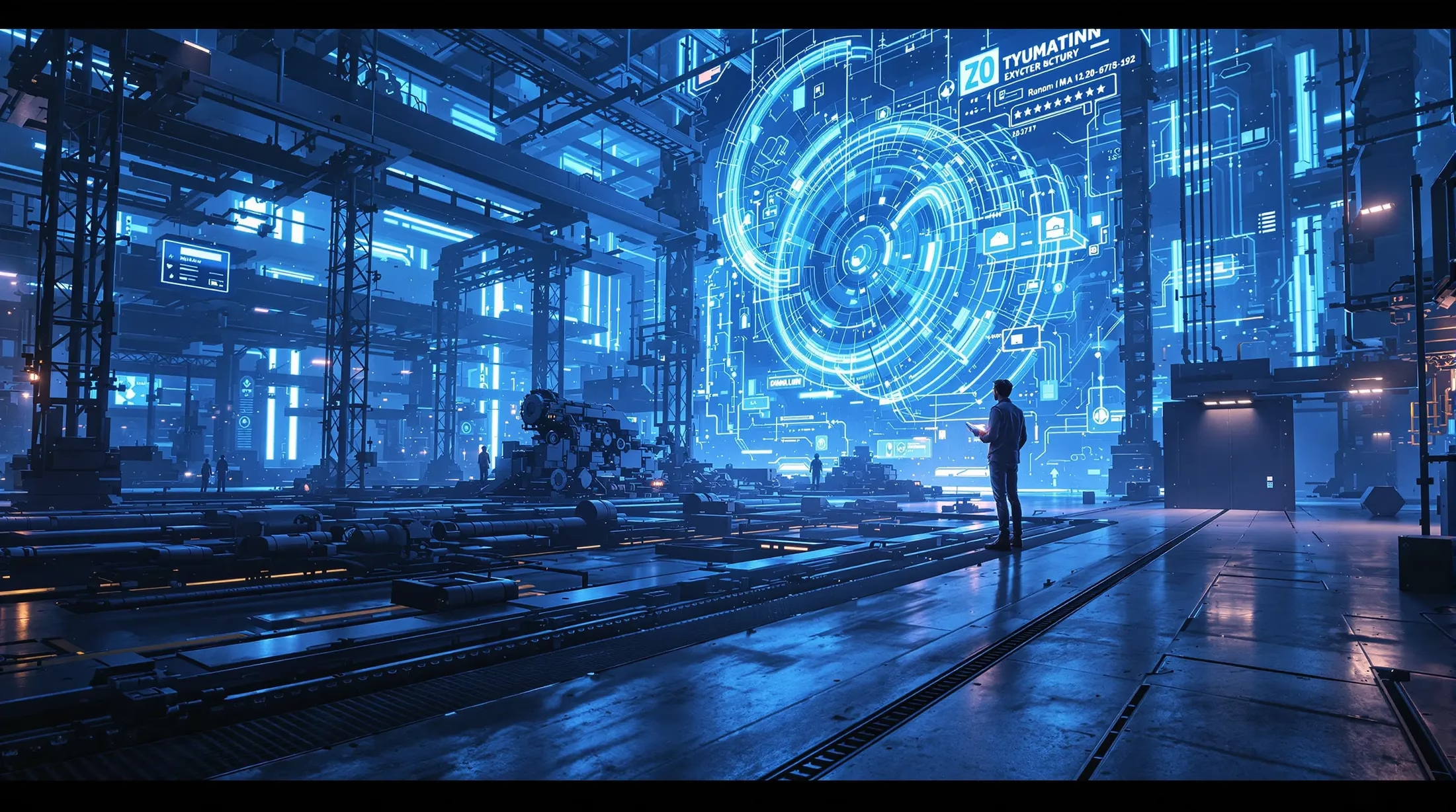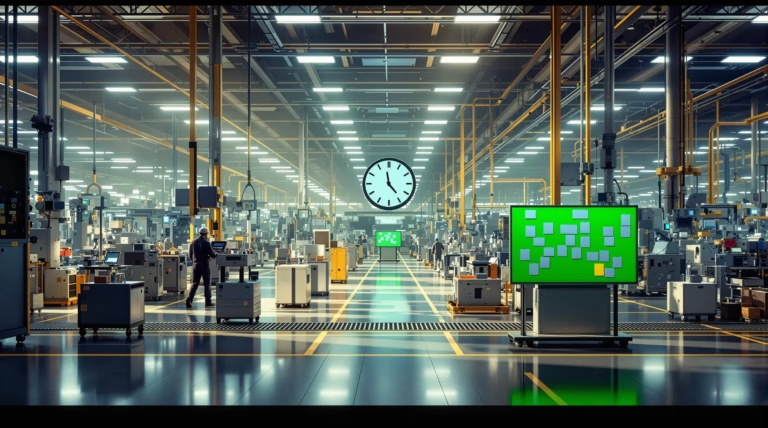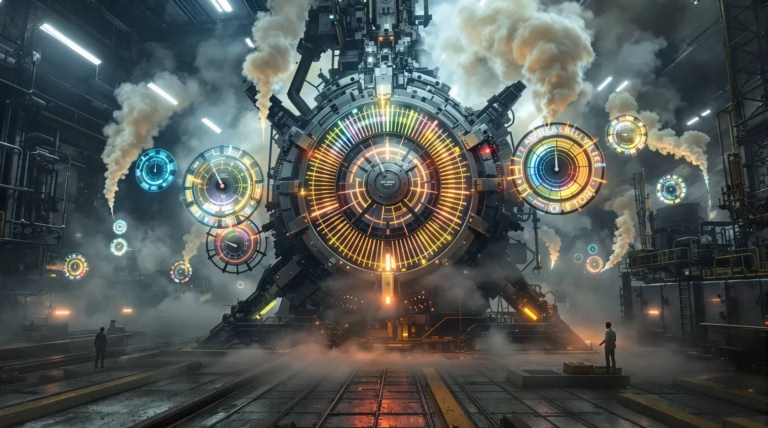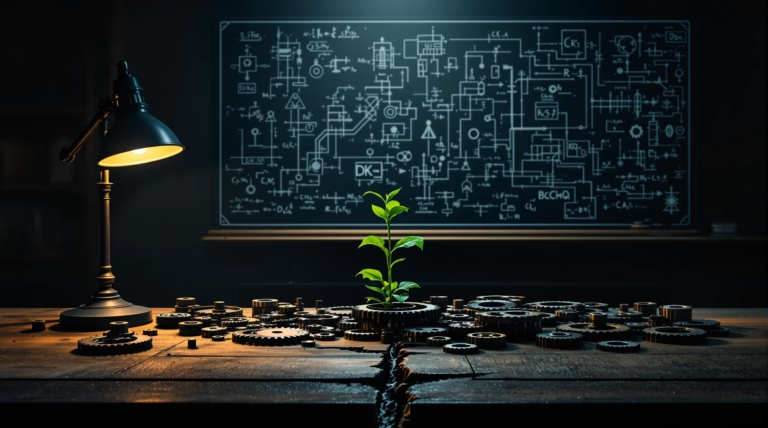Industry 4.0: Understanding the Fourth Industrial Revolution
The digital transformation of manufacturing has reached a pivotal moment with Industry 4.0. This revolutionary approach is reshaping how factories operate, decisions are made, and value is created in the modern industrial landscape. Let’s explore how this technological evolution is transforming manufacturing and what it means for the future of production.
What is Industry 4.0?
Industry 4.0, known as the Fourth Industrial Revolution, represents a fundamental transformation in manufacturing and industrial processes for the digital age. This revolution distinguishes itself through the integration of digital technologies into manufacturing operations, creating intelligent factories where physical production systems seamlessly merge with digital networks.
At its core, Industry 4.0 harnesses advanced technologies to convert traditional production facilities into smart manufacturing environments. This transformation enables unprecedented levels of operational efficiency, productivity, and flexibility. Organizations implementing Industry 4.0 principles can adapt swiftly to market changes, customize products at scale, and optimize their entire value chain through data-driven decision-making.
Defining the Fourth Industrial Revolution
The Fourth Industrial Revolution (4IR) represents a technological evolution that merges physical, digital, and biological spheres. Klaus Schwab, founder of the World Economic Forum, popularized this concept, recognizing its potential to revolutionize how we live, work, and interact.
Industry 4.0’s distinctive feature lies in its focus on intelligent automation and data exchange. Traditional manufacturing facilities are evolving into smart environments where machines communicate with both each other and humans in real-time. This connectivity enables manufacturing systems to:
- Self-optimize operations for maximum efficiency
- Self-configure to adapt to changing conditions
- Self-diagnose potential issues before they cause downtime
- Enable mass customization without compromising efficiency
- Achieve optimal production scaling, even down to single-item lots
Key Technologies Driving Industry 4.0
The technological foundation of Industry 4.0 comprises several interconnected innovations working in harmony:
- Internet of Things (IoT) – Creates networks of sensors connecting machines, products, systems, and people
- Artificial Intelligence (AI) – Analyzes data patterns and generates actionable insights
- Cloud Computing – Provides scalable storage and processing capabilities
- Edge Computing – Enables real-time decision-making at data collection points
- Big Data Analytics – Transforms operational data into strategic intelligence
- Augmented Reality – Assists workers in complex assembly tasks
- Digital Twins – Creates virtual replicas for simulation and optimization
The Impact of Industry 4.0 on Manufacturing
Industry 4.0 has revolutionized global manufacturing through strategic integration of advanced technologies. This transformation has created an interconnected ecosystem where products, factories, and assets communicate seamlessly, enabling unprecedented operational intelligence and efficiency.
Enhancing Supply Chain Efficiency
Industry 4.0 revolutionizes supply chain management through comprehensive data integration and real-time visibility. This transformation enables:
- Real-time tracking and monitoring of global supply chains
- Predictive analytics for potential disruption management
- Just-in-time delivery optimization
- Reduced inventory holding costs
- Improved order fulfillment rates
- Optimized energy consumption
- Enhanced environmental sustainability through resource optimization
Real-Time Decision-Making and Automation
The integration of advanced sensors, high-speed connectivity, and sophisticated analytics enables manufacturing leaders to leverage real-time data for critical decision-making, replacing traditional historical reporting methods. This transformation allows production adjustments to occur within minutes instead of days or weeks. When combined with automation systems, these real-time insights create self-correcting production environments where machines autonomously adapt to changing conditions, maintaining optimal performance without human intervention.
Automated data analysis represents the cornerstone of Industry 4.0 implementation, offering unprecedented capabilities through:
- Continuous pattern recognition and relationship identification through machine learning algorithms
- Predictive maintenance to prevent equipment failures before occurrence
- Automatic production rescheduling based on material availability
- Process optimization recommendations derived from performance analysis
- Transition from reactive to proactive operational management
Challenges and Opportunities in Industry 4.0
The implementation of Industry 4.0 presents a complex landscape of challenges and opportunities for manufacturing and industrial sectors. Organizations must navigate significant hurdles including substantial financial investments, technical complexities, and organizational resistance while addressing critical concerns around data privacy, security, and workforce implications.
However, these challenges are balanced by unprecedented opportunities for enhanced competitiveness and sustainability. Industry 4.0 enables comprehensive tracking and measurement across entire value chains, providing granular insights for optimization. For the workforce, this transformation eliminates repetitive tasks, enabling collaboration with smart technologies on higher-value activities, though this shift necessitates new skill sets and approaches to human capital development.
Overcoming High Costs and Implementation Barriers
Small and medium-sized enterprises (SMEs) face particularly significant challenges in Industry 4.0 implementation due to substantial initial investments. These include:
- Hardware costs (sensors, actuators, connectivity infrastructure)
- Software platform investments
- Analytics capabilities development
- System integration expenses
- Legacy system compatibility challenges
Organizations are developing strategic approaches to overcome these barriers through phased implementation plans, cloud-based solutions, and collaborative initiatives. Government support through tax incentives, grants, and subsidized consulting services further enables adoption, particularly among smaller manufacturers navigating digital transformation.
Ethical Considerations and Workforce Adaptation
| Challenge | Solution Approach |
|---|---|
| Privacy concerns and data collection | Implementing robust data governance frameworks |
| Cybersecurity vulnerabilities | Enhanced security protocols and regular assessments |
| Algorithmic bias and transparency | Ethical AI frameworks and accountability measures |
| Workforce transformation | Comprehensive upskilling programs and career development |
Future Trends: From Industry 4.0 to Industry 5.0
As Industry 4.0 continues to reshape manufacturing landscapes, Industry 5.0 emerges as the next evolution, emphasizing human-machine collaboration rather than pure automation. This philosophical shift represents a more balanced approach that recognizes and leverages the unique strengths of both human creativity and technological capabilities.
Industry 5.0 expands beyond operational efficiency to encompass human-centric values, environmental sustainability, and societal impact. This evolution reflects a growing understanding that technological progress must be measured not only through productivity gains but also through its contributions to human well-being, resource conservation, and long-term planetary health.
The Rise of Industry 5.0
Industry 5.0 emerges as manufacturers recognize the limitations of purely technology-driven approaches. This new paradigm reintroduces human ingenuity as a central element in manufacturing processes, creating collaborative environments where robots handle repetitive tasks while humans contribute critical thinking, creativity, and ethical judgment. This complementary relationship leverages the precision of advanced technologies while preserving irreplaceable human innovation and decision-making capabilities.
- Human-machine collaboration enhances overall productivity
- Cobots work alongside skilled operators in smart factories
- Combined performance exceeds individual capabilities
- Systems become more resilient and adaptable
- Innovation drives through human creativity and technological precision
Focusing on Societal Well-Being and Sustainability
| Focus Area | Implementation Strategies |
|---|---|
| Environmental Responsibility | Circular economy models, design for disassembly, resource optimization |
| Social Impact | Inclusive workplaces, meaningful employment, human skill development |
| Sustainability Initiatives | Real-time resource monitoring, climate neutrality targets |
| Core Pillars (EU Commission) | Human-centricity, sustainability, resilience |
Industry 5.0 integrates environmental responsibility throughout the manufacturing lifecycle, from material sourcing to end-of-life product management. Organizations implementing these principles focus on creating manufacturing ecosystems that positively contribute to social well-being while supporting climate neutrality targets. The European Commission’s recognition of human-centricity, sustainability, and resilience as core pillars signals a fundamental shift where industrial advancement must equally serve people, planet, and profit.







